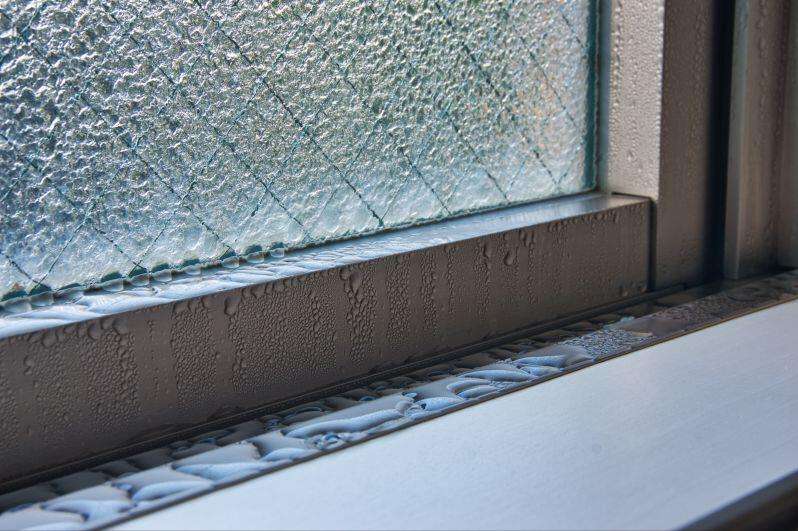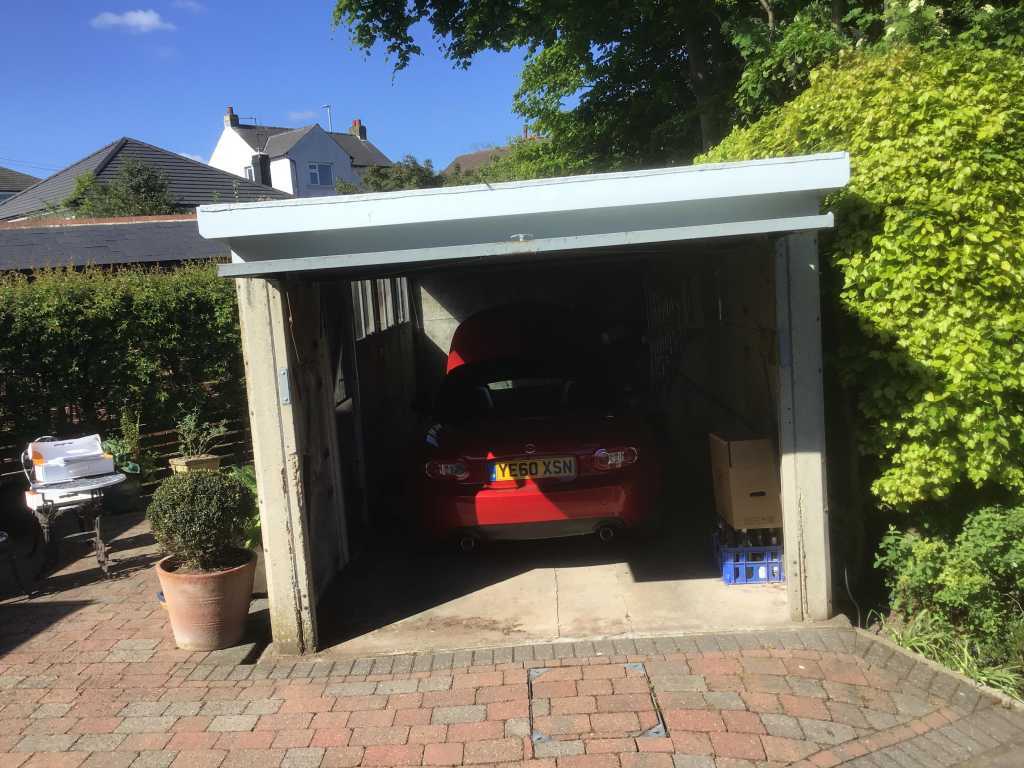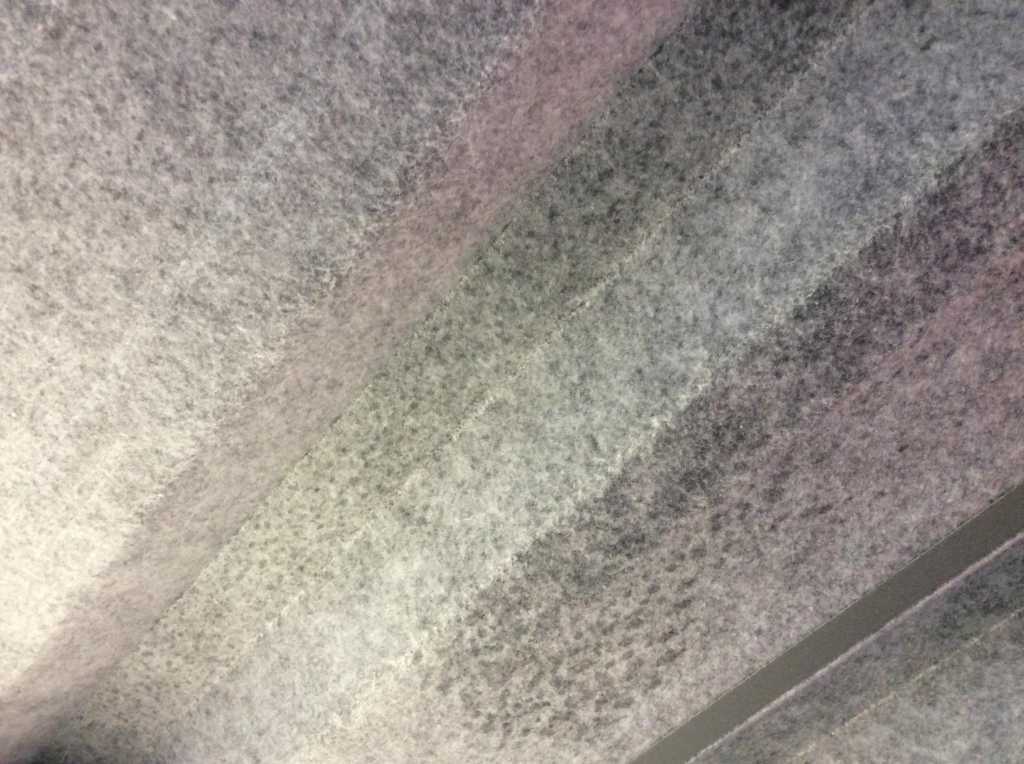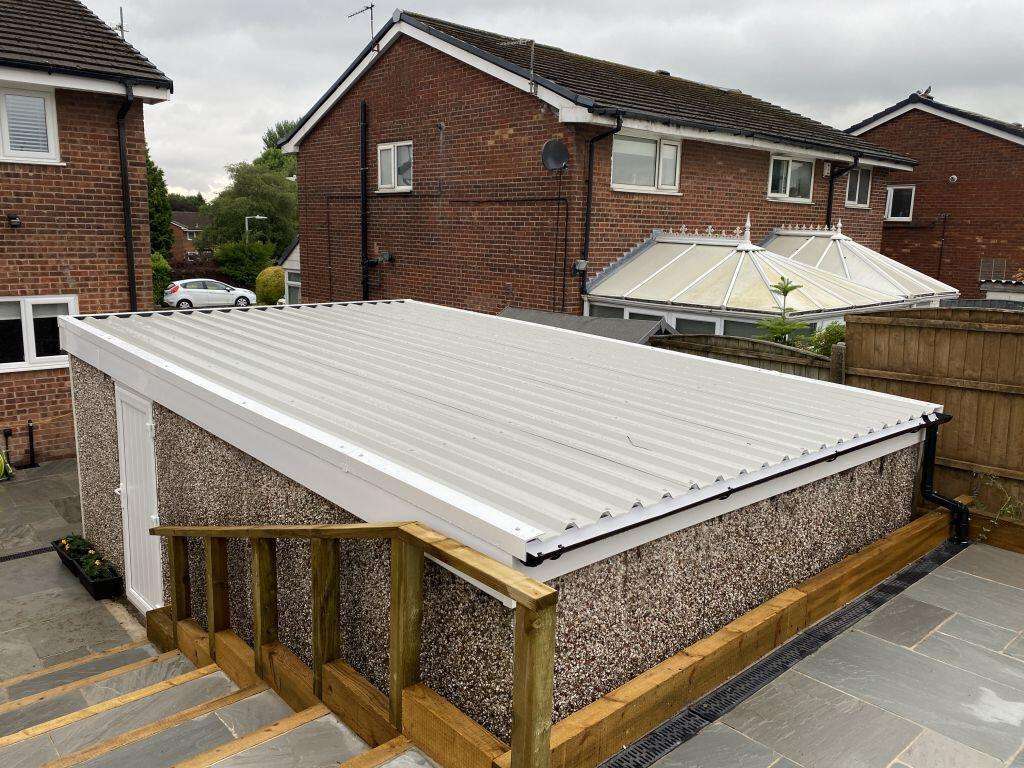Condensation in Garage
How to Reduce Garage Roof Condensation

Is condensation stopping you from using your garage the way you want to use it?
In this guide, you’ll receive actionable tips on how to reduce garage roof condensation.
You will also learn about the causes of condensation so you can continue to use the garage as normal.
- What is Condensation?
- Dripping Condensation from the Garage Roof
- Causes of Garage Roof Condensation
- Taking Control of Condensation
What is Condensation?
Condensation in your garage starts when warm air inside the garage rises and encounters a cold surface (most often the garage roof or a window).
This battle of hot and cold causes water vapour in the air to liquify and patches of water to form.
In worse cases, these patches even drip onto the floor or your belongings.
Dripping Condensation from Corrugated Garage Roofs
Dripping condensation from the garage roof happens when your roof material is not absorbing moisture properly.
Porous roofing panels such as asbestos or cement fibre should be replaced with water-resistant materials like rubber or galvanised steel.
Is Your Garage Roof Leaking or Condensating?
Get a quote to remove and replace your old garage roof with a 100% watertight roofing system.
Causes of Garage Roof Condensation
Condensation in the garage is most often caused by:
- A change in outside temperature
- Running appliances without ventilation
- Roofing panel material
- Parking a car in garage whilst the engine is still hot
- Poor drainage system
1. A Change in Outside Temperature
The underlying cause of condensation is a difference in temperature between the inside and outside of the garage.
Often in the winter, or after it has rained, warm air inside the garage rises up towards the cold roof.
When it interacts with the cold surface, water vapour turns to liquid and condensates.
Any sources of heat inside the garage will amplify this problem and make your condensation issues even worse.
2. Running Appliances in the Garage Without Ventilation
Many of us use our garage as a place to keep our household appliances.
The problem is, things like the washing machine or fridge freezer emit heat inside what is already an enclosed space.
With no ventilation, trapped heat rises to the roof of the garage and interacts with the cold air on the outside, resulting in condensation.
As the heat is unnatural, excess condensation is more likely to form and may even begin to drip.
3. Your Roofing Panel Material
Most garages are not well insulated nor well ventilated.
Garages built many decades ago were designed to prevent water coming in from the outside. But, they do little to stop trapped moisture inside of the garage.
Only roofing systems installed with an anti-condensation membrane will negate damage caused by condensation.
Ageing roof panels are also prone to being eroded away by rain, sleet, and snow. Cracks eventually will show and swell in the winter months. Water may seep through these cracks and cause leaks in the garage roof.
4. Parking Your Car in the Garage Whilst the Engine is Still Hot
When you bring your car home after a drive, the engine will be emitting a lot of heat.
If the car goes straight into your garage, with the garage door closed and no source of airflow, the temperature inside will rise rapidly, resulting in condensation.

All motoring associations, including the RAC and the AA,recommend you leave your car outside of the garage whilst the engine is still hot.
This is to let the engine to cool down before parking your car in the garage overnight.
Condensation can not only damage your garage but also the rubber seals around your windows, doors & electrics.
This may lead to expensive repairs.
5. Poor Drainage System for Water to Run
Condensation may also be a result of a poor drainage system. For example, a failing drainage system will inevitably begin to pool on the garage roof, around the garage and, possibly, inside.
When water pools like this, it either evaporates or condensates.
Mulch and dirt will build up too and add more fuel to your condensation problems.
A proper drainage system will ensure dirt & water is drained away from the garage efficiently.
Protect Your Garage Roof from Condensation for up to 35 Years
Our garage roofs come equipped with DRIPSTOP anti-condensation membrane as standard.
How to Reduce Condensation in Your Garage
Here’s a list of ways to reduce condensation in your garage:
- Introduce more airflow
- Remove sources of hot air from inside the garage
- Install anti-condensation roof panels
- Insulate the garage roof, walls or floor
- Inspect your drainage
Introduce More Airflow
Improving airflow to your garage is the most accessible way of reducing condensation issues. Good ventilation is key and, if the garage has no room to breathe, excess moisture in your garage will build up and condensate.
There are ways to introduce more airflow to your garage. For example you could:
- Open your garage door
- Open/install a garage window
- Open/install a side access door
- Remove foam infills from your garage roof
Remove Sources of Heat from Inside the Garage
When proper ventilation is in place, appliances that emit heat are perfectly fine to store inside the garage.
However, even with good airflow, it still may be the cause of your condensation issues. If the appliance, car or machinery emits too much heat, you may have to remove these from your garage altogether.
Install Anti-Condensation Roofing Panels
Preventing water ingress in the garage is important for any homeowner.
If condensation is persistent and compromising the security of the garage, your best option is to replace the garage roof with anti-condensation roofing panels.
Anti-condensation roofing panels use a felt membrane to trap excess moisture and prevent condensation from dripping inside your garage.

Insulate the Garage Roof, Walls or Floor
Besides insulating the garage roof, you can also insulate the garage walls or floor. It may be worth your while to speak to a professional about insulating the inside of your garage.
Inspect Your Drainage System
Keep an eye out for anything obstructing the gutter downpipes or the drain covers.
Get a Quote to Replace Your Garage Roof in Less Than 24 Hours:
Say goodbye to condensation by filling in a form or calling us on 0800 133 7318 for your free quotation.

“Cannot recommend Danmarque enough. From first enquiry to completed job they are 100% professional and upfront about all costs and expectations.”
Opening Times:
9:00am – 5:30pm Monday to Friday
